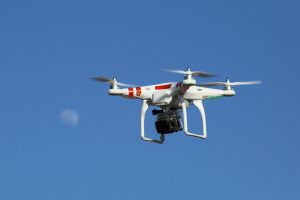Table of Contents
Overview
Many people truly appreciate the combination of drone videos and live streaming more than anything else. Drone videos allow you to enjoy interesting and truly impeccable aerial views, making everyday views a lot more fascinating. Additionally, with live streaming, there are more highly appreciated videos shown in real-time to your audiences and viewers. Combining a good video and live streaming is indeed something that opens aerial shooting and viewing to more possibilities than there already is.
This post will be mainly about videos that your drones can shoot and the live streaming capabilities. So if you are interested in doing live streaming videos from your drone, then you might want to read this article that we have prepared for you. We will be talking about what live streaming is, how it works, and atopic specifically made for live streaming with the use of DJI Mavic drones.
Live-streaming with your drones
Drone live streams are awesome because they seem to look cool and allow people to see or watch an event that is happening far away in real-time. Additionally, it allows the audience to experience or see Earth’s surface from a bird’s eye view.
What is a Livestream?
Streaming is the method of data transmission used when a video is being watched over the internet. Live streaming is a method where the streaming video is sent over the internet in real-time without being stored or recorded first. Live streaming with drones is simply a video being captured during flight and being sent over the internet for the people or audiences to watch in real-time. Live drone video footage is very helpful in so many events, and the most important and common ones will be mentioned below.
Benefits of a live stream and where it is commonly used.
Live streaming has greatly improved communication and context over the years, mostly for viewing issues and emergencies. These options for drones aids in faster response times and resolutions. This allows the viewers to identify the concerns and gauge the severity of the situation, making them provide an appropriate response in a timely manner.
Here are the top situations or examples where drone live streaming is being used:
Recreation and leisure
People who love to travel or those who create travel blogs for a living usually share their experiences through live streaming on social media for their friends and followers to see. Using a drone to live stream for recreational use just simply ups the game and makes your live stream posts truly stand out. Sharing a live video coverage of a beach or any wonderful place is truly breathtaking, making it very wonderful to be shared in real-time.
Live events
Live drone footage during special occasions and events gives an impressive variety to the event broadcast and effectively elevates the production value. Live streaming with drones is very common in concerts, tournaments, weddings to give the viewers different perspectives with glamorous aerial views. Drones are especially useful in sports broadcasts and tournaments since they are fast enough to follow the athletes’ movements, making it possible for the viewers to follow real-time action.
Emergencies – search, rescue, and inspections
This is one of the most important aspects where drone live streaming is applicable, saving lives. Drones are usually dispatched during search and rescue operations that are impossible to be accessed by humans, such as forest fires or boats that are lost at sea. Personnel who uses a drone to live stream an emergency footage situation will share the real-time coverage to a private channel that can be viewed by authorities involved in the case. Drones can also be used for industrial inspections.
Drone racing
Drone racing has become more popular nowadays as a new and thrilling sport. These races commonly use standard drones, and the competitors will then wear virtual reality headgear so that they can see where their drones are going and make it easier for them to pilot their vehicle around the race track. Their respective pilots will only see the live stream video footage of each drone.
How drones transmit live videos
The first-person view live video in drones uses radiofrequency antenna, transmitter, and receiver signaling technology. Radio frequencies always need an antenna to transmit and receive radio signals that are used for transmitting videos. Here is a video that explains more about drone communication:
Streaming videos with DJI Mavic drones
DJI OcuSync
OcuSync is a part of DJI’s Lightbridge transmission family and is a lot better than other WiFi and RF analog transmission systems. The OcuSync functions with more effective digital compression and channel transmission technologies, allowing it to transmit high definition video in a very reliable manner. The DJI OcuSync is also able to deliver a perfect balance between latency and receptivity.
DJI OcuSync 2.0
The OcuSync 2.0 technology supports both 2.4 GHz and 5.8 GHz frequency bands, featuring stronger interference resistance and automatic switching capabilities. The OcuSync 2.0 is being used in the new DJI Mavic Air 2 drones, which gives it an impressive max video transmission distance.
How to live stream drone footage
There are a couple of ways or methods to live-stream your drone footage, and these include streaming from your native drone flight app through a capture card and stream from multiple sources.
Native drone flight application
If your drone comes with a phone application, you may be able to use it for live streaming your drone’s video footage. A great example is the DJI GO 4 application, a companion app that allows you to share your drone footage on different broadcast platforms such as YouTube, Facebook Live, Weibo, QQZone, and Custom RTMP. Live streaming through your drone’s companion application is the most convenient way to live stream, especially if you are still new to the drone industry or do not have any special streaming equipment.
Capture card
If the remote controller of your drone has an HDMI output, you will be able to use it to live stream with a capture card and streaming software. Your controller will deliver a live video feed via HDMI towards the capture card. The capture card will receive the input data and will transmit it to a PC for encoding. Using a capture card can be a bit complicated for beginners and can be difficult to use if you are out and about while doing a live stream. However, this is beneficial since it gives you more options for streaming. This is often utilized by professionals that cover live events and tournaments.
From multiple sources
This is the most complicated one and involves quite a high level of professional drone work. If you live stream using multiple sources, it will be possible to broadcast a live feed from multiple drones through a multi-channel video encoder. Using multiple sources indeed is very versatile, fast, and high-quality. This technology is commonly used to stream drone races and often used during search and rescue operations.
Final thoughts
We hope that this article has opened a new world of possibilities for live streaming with the use of your drones. Indeed, live streaming from your drone’s video footage is not just about fun, leisure, and capturing breathtaking sceneries; they are also utilized in many important events and very difficult tasks. We hope that you will have a good time and be able to use your drones well to live streaming.

